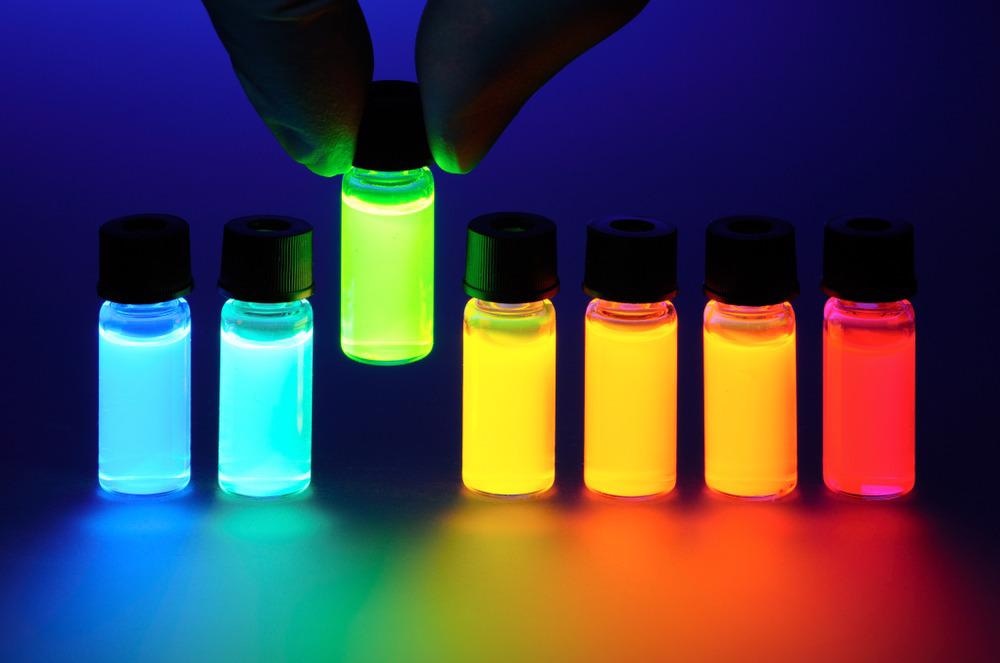An article recently published in Optical Materials explores a new method for producing blue, white and cyan luminescence by layering the thermal oxidized porous silicon (PS) with green synthesized Carbon Nanostructures (CNs).

Study: White, blue and cyan luminescence from thermally oxidized porous silicon coated by green synthesized carbon nanostructures. Image Credit: Denis Larkin/Shutterstock.com
The article shows that hydrogen-containing species, CNs bonding with oxide layers and their quality highly impacted luminescence properties.
This work allows an inexpensive yet clean method to design instruments related to optoelectronic and biomedical fields such as light-emitting diodes (LEDs), photo-detectors and biosensors.
Luminescence through thermally oxidized PS and CNs
Green synthesized carbon nanostructures are highly useful in operationalized porous silicon surface since it is cheap, eco-friendly and easy to perform.
PS and green produced CNs both have effective luminescence at room temperature, are biodegradable and are non-toxic.
Green synthesized carbon nanostructure does not fade in physiological liquids and hence they can be employed in medical applications such as imaging systems.
Furthermore, due to their unrivaled optical and chemical properties, CNs are useful green nanomaterials for biosensing and optical devices.
White light, blue light and cyan light are produced after hardening of aged thermally oxidized covered with CNs. The experiments showed that this method is more effective in creating the Si–C bonds essential for biomolecule attachment to the PS surface.
Preparing the Samples
In experiments, silicon wafers were scaled to obtain 1 cm2 porous area. The specimen was cleaned and soaked with ethanol before etching.
Afterward, electro-chemical etching was performed, and PS was obtained. The PS specimen trials were aged for six months.
For green synthesis of CNs, sucrose was disintegrated using vinegar acid. Baking powder was then added to the solution and the basic solution was microwaved for a few minutes.
After the heating process, the CN solution was purified and obtained. Finally, using techniques of thermal oxidation, aging, annealing and coating them with CNs; S1, S2, S3, S4 and S5 spectrum samples were obtained that showed luminescence of cyan, red, blue, red and white respectively.
These samples were examined using Fourier Transform Infrared Spectroscopy (FTIR). Moreover, Dynamic Light Scattering and zeta potential measurements were done to analyze the size variation and net charge on CNs surfaces.
Results of Spectrum
The results showed that the CNS were collected in various sizes and spread into pores.
The chemical composition of them was extremely pure i.e., no chemical disturbance and contained majorly carbon and oxygen elements in nearly equal halves.
Blue was absent in the photoluminescence spectrum of layers containing oxides that were produced by aging. It was also observed that the oxygen elements in the aged PS can alter the surface properties of the CNs, making a shift in red luminescence in the S2 spectrum.
The S3 spectrum showed dark blue characteristics since the intensity of red and green emissions were low.
Moreover, it was also noted that the luminescence equilibria can be controlled by pores’ volume. Impurities in air also affected the specimens such as in the hardening process, outside atoms would join to immobilize radicals.
Oxide-layers combining with CNs also affected the equilibrium and quality of blue and green luminescence.
Luminescence of blue, red and green was dominant in S5 as compared to S3 spectrum.
Slow interactivity with CNs caused low blue and green components in the photoluminescence spectrum of S4 and S2. Moreover, S4 spectrum showed a decreased amount of carbon deposits as compared to S5 spectrum.
Further properties showed that S5 containing more carbon elements has less reducing power than the S4.
The FTIR showed that S5 spectrum combines much more strongly with carbon nanoparticles and at a faster rate as compared to S4. This also confirmed that the oxide layers play important role in determining the nanostructured compounds.
A Step Closer to Easy and Eco-Friendly Technology
After observing patterns of the sampled spectrum, the bonds formed were in various sizes, different quality of layers and different pore distribution of sizes of the nanostructured compounds.
Furthermore, it was possible that the higher interactivity of CNs with the SiOx layer can cause a more intense green luminescence component.
The approach suggested in this paper is cost-effective, simple, and safe for forming strong silicon carbide or silicon oxycarbide bonds, which is critical for biosensor experiments.
Many optoelectronic devices, such as biosensors, photodetectors, and LEDs, will be able to be redesigned in the future using this simple yet effective technology.
Continue reading: Optoelectronic Device Hyperspectral Mapping with High Spatial Resolution Using Cathodoluminescene
Reference
Basak, F., & Kayahan, E. (2022). White, blue and cyan luminescence from thermally oxidized porous silicon coated by green synthesized carbon nanostructed. Optical Materials. Available at: https://www.sciencedirect.com/science/article/pii/S0925346722000246?via%3Dihub
Disclaimer: The views expressed here are those of the author expressed in their private capacity and do not necessarily represent the views of AZoM.com Limited T/A AZoNetwork the owner and operator of this website. This disclaimer forms part of the Terms and conditions of use of this website.